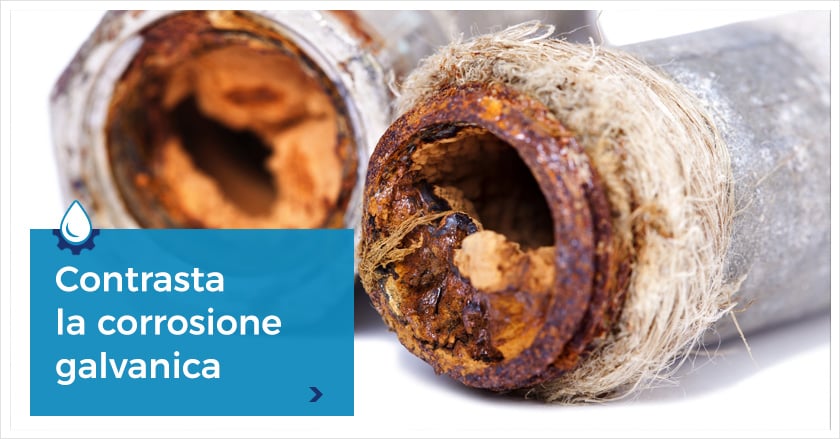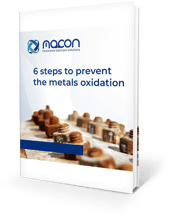
Counteracting galvanic corrosion
Galvanic corrosion is a wet corrosion process that originates from any pair of different metals, sufficiently distant in the electrochemical series, placed in direct contact with each other.
The contact between a more noble metal and a less noble one creates a galvanic coupling, with the less noble metal that will be subject to corrosion, while the more noble one will remain intact.
Why is it called such?
Galvanic corrosion takes its name from Luigi Galvani who, in 1780, studied the phenomenon of corrosion for the first time. How so? Through one of his many experiments, he discovered that two different metals connected to each other, when immersed in a saline solution and if connected at the same time to a different region of the uncovered nerve of a frog’s foot, caused the contraction of the leg itself.
This phenomenon was subsequently taken up and developed in depth by Alessandro Volta.
Galvanic Corrosion: how to notice it
Now that we have specified what it is and how galvanic corrosion has been discovered, I will explain how to identify it.
This phenomenon is easily recognisable, since corrosion is more pronounced in the junction between the two metals and not at other points of the metal surface.
But why does it form?
Normally, galvanic corrosion is the result of:
- A defective design of the instrument or machinery
- The wrong choice of materials
- A partial or complete dissolution of a more noble metal used to coat a less noble one (such as iron)
In fact, the greater the potential difference between the two metals, the faster the galvanic corrosion attack, as the solubility potential is subject to several factors:
- Presence of passive or protective films
- Polarisation
- Aeration
- Temperatura
- Complex agents
Read more on our blog about the 6 ways to destroy your project with the wrong lubricant grease.
Galvanic corrosion: the utility of a good lubricant
Galvanic corrosion can cause considerable damage to your instruments and machinery but fortunately, it is possible to remedy its action in different ways and at different times.
From the design phase, in fact, we can predict how, when and where this phenomenon could occur. In order to then prevent it from happening, it is important to avoid contact between materials of very different nobility or to isolate - where possible - different metallic materials from each other.
One of the most effective and cost-effective solutions is to use lubricants on surfaces that act as protective coatings, thus significantly reducing the risk of galvanic corrosion. This is without a doubt the best solution for to prevent and even eliminate this phenomenon, since an effective lubricant created specifically for your needs is able to reduce the corrosion process, isolating each component without interfering with its operation.
To understand which product to choose to defend your machinery from galvanic corrosion, download our free guide to perfect lubrication!
Protective lubricating fluids
Complete guide on anti-rust formation

6 fundamental measures to prevent metal oxidation



